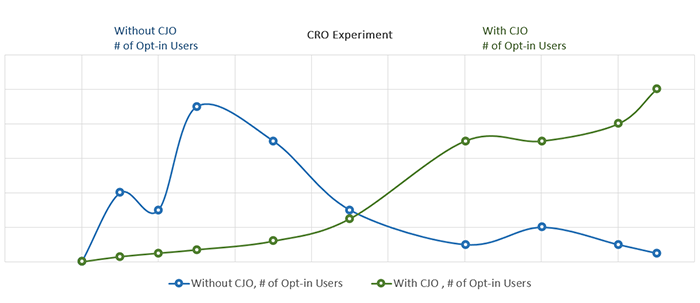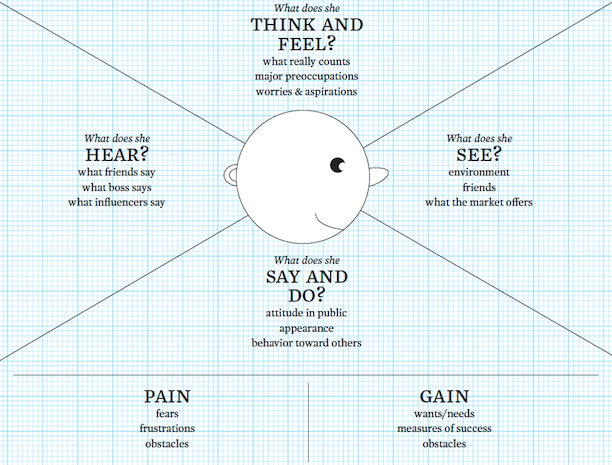How to Improve User Experience with Customer Journey Optimization

When it comes to growth hacking, entrepreneurs try every strategy they can find to convert visitors to loyal customers. They invest heavily in designing beautiful websites, or spend a fortune on advertising to increase traffic, hoping to direct every new customer to their sales page and push them to buy (or at least try) their product.
What’s Wrong with This?
This works in two scenarios: in case you don’t know what you’re doing or if you are trying to run a ‘touch-and-go’ business.
The truth is, while beautiful websites with great UIs may attract people to your website or your app, it does not really contribute that much to increasing your revenue, or adding value to your customer’s experience.
The problem is that some entrepreneurs try to invest in paid media and advertising to increase their opt-in rate and get more customers, and they overlook the fact that while such digital marketing strategies are great for your business, you must first build a solid foundation, optimizing the user experience and encouraging your visitors to return.
The most essential factor that can positively transform your growth rate is enhancing your user experience through Customer Journey Optimization, also known as CJO strategy. In this article, I’ll walk you through the most vital steps of Customer Journey Optimization strategy and help you increase your conversion rate and optimize your user experience.
Why Does Conversion Optimization Matter?
Running a successful online business means being able to increase your revenue, scale your business, make customers happier, and reduce your costs. As straight forward as this may sound, many entrepreneurs won’t make it too far because the devil is always in the details.
Here’s the truth: When you spend a lot of money on marketing and advertising and use different strategies to increase your traffic, your aim is to encourage every visitor to make a purchase, and buy your service, but it doesn’t happen just like that!
In reality, apart from your loyal customers, not every visitor who lands on your website is willing to try your service or pay for it. Thus you should engineer your website to attract your visitors to stay longer, and encourage them to learn more about you. The secret to success is in understanding your customer’s preference. You must pay attention to their persona, find out what matters to your customers, and try to engage with them while they are on your website.
The main question is, how do you know what your customers would be interested in? That’s exactly where conversion rate optimization (CRO) strategy comes into play. Conversion rate optimization refers to a set of data-driven growth hacking experiments that help you discover the weak spots on your landing pages, and tune them towards your customer’s preferences.
A CRO experiment takes about four to six weeks. Ultimately, you should be able to begin having high quality engagement with your visitors, and convert them to loyal customers.

Source: Conversion Rate Optimization
What Is Customer Journey Optimization?
While conversion rate optimization focuses on optimizing your landing pages through experimenting with different designs, background colors, buttons, forms, text, and so on with different customer segments, customer journey optimization helps you take your customer experience to the next level.
When we talk about customer journey, user experience plays a great role in it. It would be unfair to limit the scope of UX as it spans a wide range of things from understanding customer’s behavior through research all the way to strategizing and copywriting.
The best measurement to know if your website UX is engineered to convert more visitors to leads is your customer behavior. Understanding customer behaviors enables you to design or redesign your landing pages based on proven facts, with customer needs in mind, and remove unnecessary design elements. For instance, you don’t need to ask your customers to give you every detail about themselves just to offer a free trial.
Customer journey optimization refers to a predefined path that your customer segments will walk through, until they make a purchase and become your customer. In plain English, you must design different landing pages, separate lead magnets, and special offers for different customer segments.
One of the biggest mistakes that entrepreneurs make is underestimating the power of market segmentation. When you drive all of your traffic to one trial offer, sales letter or homepage, you’re highly likely to experience a huge decline in your conversion rate.
Designing different landing pages is just the beginning. In fact, the tone of your copywriting must match your customer’s need and enthuse them to keep going. For instance, if you’re selling apparel for teenage girls and teenage boys, you may want to funnel your traffic based on gender; this way you’ll see a great boost in your conversion rate. On the other hand, if you’re selling a product that is a bit complex to use, you may create two different blog posts, “The Advanced Guide” and “The Beginner’s Guide,” and drive different customer segments to each page. This way, you are engaging both customer segments the way they need to be engaged.
Customer Experience Best Practices
The main reason that many user experience experiments fail is that UX designers and entrepreneurs don’t put enough effort into understanding their customer’s persona. The secret behind successful online businesses is in understanding what your customers want, desire, need, have, love, hate, etc.
You may focus on functional aspects of your offer and only address their functional pains, however every single human being has emotions and you may want to focus on exploring their emotional desires, and get to know them more and more. This way, you’re not only helping your customers to get what they want, you’ll also make better relationships with them and touch their hearts, giving them an option to choose you over your rivals.
The empathy map can be a great tool in identifying your customer’s persona. The empathy map is collaborative tool that is mostly used to generate innovative business ideas. It is the most substantial exercise that you must do before spending a penny on advertisement or any customer acquisition activity.
The empathy map template helps you to develop a deep understanding about your prospective customer’s attitude, challenges, concerns, pains, desires. It also lays out a clear blueprint that empowers you to take your customers on the right journey that consequently results in higher revenue for your business.

Source: Innovative Business Model
Once you have defined your customer segment, and categorized your customers based on their persona, you may now focus on customer acquisition strategies. In fact, you must find out your customer’s pain points, and be able to address them quickly.
When it comes to increasing your conversion rate, you should consider answering the following questions before beginning a new CRO experiment.
- What is my ROI from customers who have used my free service?
- What’s my opt-out ratio?
- How long will customers stay with me before they opt out?
- What’s my unsubscribe rate after I send an email marketing campaign?
- How often do I proactively engage my free users?
If your answers to these questions are not promising, you should re-visit your analytics and craft a new growth strategy. Remember, successful marketing is a combination of art and science; removing any of these two elements from the equation can cause drama for your business.
Nevertheless, the best workaround is to examine your paid customer segment. Use your analytics data and extract the existing paid customers and find out how long they have been using your product. If your revenue stream is either subscription-based or a pay-per-use model, you may analyze your lifetime value (LTV). In plain English, how long will one customer pay for your product before they cancel their subscription or switch to a competitor’s product?
If you don’t offer recurring payment and your business mostly generates income from one-off deals, you may search the purchase history of your customers and look for the number of follow-up purchases that have made. Make sure to list the idle period between each purchase. Since word of mouth and social signals play a great role in growing your business, you ought to highlight the ratio of new customers who’ve been referred by existing ones and made a purchase.
Don’t Bundle Everything
It’s undeniable that as a business owner you need to take to account the costs you incur to offer a product. In fact, in many circumstances, bundling a not-so-popular product with your best-selling offer would be an intriguing idea, however, bundling might not be the right solution to enhance your user experience.
You must be able to observe things from your customer’s perspective. There are no “keep-the-lights-on” (KTLO) costs, operational expenses, and maintenance fees in your customer’s mind. As a matter of fact, the only factor that matters to your buyers is this: “Is the value I get from your offer worth the money and time I spend on your website?”
Offering a bundled product to a customer segment that wants to use your main product, and has no intention of using your bundled offer, can significantly drop your conversion rate and consequently your revenue. Make sure that your product and pricing model matches the right customer segment. Promoting the right product, can ease the up-selling and cross-selling process.
Engage with Customers All the Time
The story does not end here. Even your most loyal fans would love to know how they can get more benefits from your product. The good news is that you can kill two birds with one stone by engaging with your customers and prospective clients, and improving brand awareness through influencer marketing.
Although content marketing and email marketing are two subjects that many people have written about, I believe it would be unfair if I don’t highlight a few invaluable systematic techniques that can improve your customer experience. It really does not matter whether you are running a SaaS company or your business is in interior design and selling furniture. There is always room for improvement and pushing the industry’s limitations.
If you know about the most challenging issues that your visitors face, you can leverage your data and craft a few step-by-step guidelines, beginner’s guides, or how-to articles to help them address their challenges without paying a dime. This will not only differentiate your business from your competitors, it also creates a sense of belonging about your business in your customers.
In case you have not collected such data, you can begin today by conducting a quick survey and sharing it with your subscribers and customers. The fastest workaround is to let your customers, visitors, and leads know that you are giving out giveaways in exchange for their honest feedback. This is a win-win situation and helps you quickly build your database, and learn what you need to fix. As soon as you have gathered the right insights, you can plan your engagement strategies.
All in all, if you want to be in the business for the long haul and outcompete your competitors, you must know that your most precious assets are your customers. Believe me, if you plan your customer journey experience based on reliable facts, you’ll get happy customers who drive more leads and referrals.



